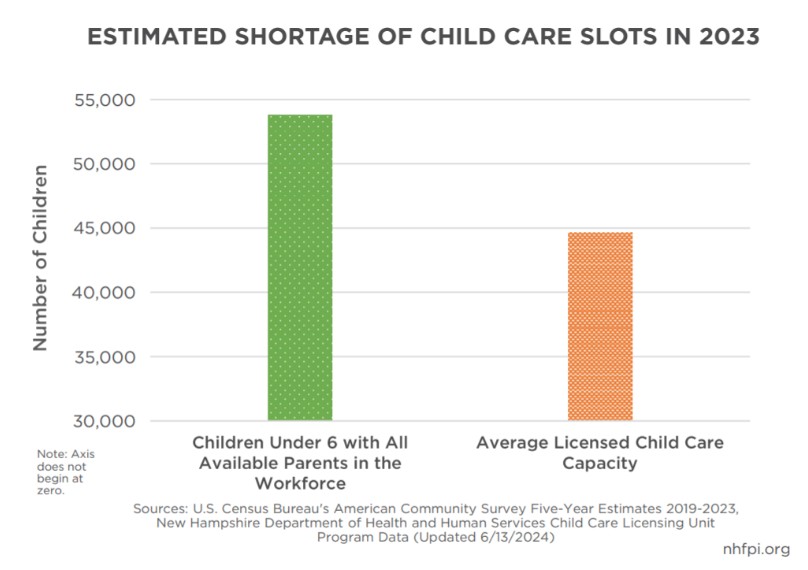Lack of child care slots also has multi-million dollar impacts on overall N.H. household incomes and state and local tax revenue
Concord, NH – New Hampshire businesses may lose an estimated $56 million annually due to the lack of available licensed child care slots, according to a new study from the New Hampshire Fiscal Policy Institute. The study’s findings underscore how workforce shortages, high costs, and limited child care options are creating significant barriers for working parents and hampering the state’s economic growth.
Researchers at the New Hampshire Fiscal Policy Institute analyzed a number of factors, including statewide child care capacity, workforce participation, and productivity losses to estimate the economic impact of child care shortages. Using New Hampshire labor data and national models, they estimated how many parents may be affected by the child care shortage, and the resulting effects on family incomes, businesses, and tax revenue.
“Early childhood care and education is an economic issue, not just a family issue,” said Nicole Heller, NHFPI?Senior Policy Analyst and the lead researcher on this study. “When parents can’t find or afford child care, they are forced to reduce their hours, leave the workforce, or turn down career advancement opportunities. That not only impacts families but also employers struggling to retain and recruit workers.”
Key findings from The Economic Impact of the Granite State’s Child Care Shortage include:
- Impact on businesses: Business losses due to reduced productivity and workforce disruptions totaled $36 million to $56 million in 2023.
- Impact on family incomes: New Hampshire families lost an estimated $114 million to $178 million in earnings in 2023 due to inadequate child care availability.
- Impact on tax revenue: State and local tax revenues may have been reduced by $9 million to $14 million due to inadequate child care availability, equating to nearly $1,300 to $2,000 per unavailable child care slot in 2023.
Additionally, the study highlights how inadequate child care access may be contributing to labor shortages in sectors across the state. It also points to policy solutions that could help stabilize the child care sector, including increased public investment, employer-supported child care initiatives, reduced administrative barriers, and incentives for child care workforce retention.
“The economic cost of inaction is clear,” Heller added. “Investing in early childhood care and education infrastructure is one of the most effective ways to support working families, strengthen businesses, and drive long-term economic growth.”
Read the full New Hampshire Fiscal Policy Institute study, The Economic Impact of the Granite State’s Child Care Shortage, at https://nhfpi.org/resource/the-economic-impact-of-the-granite-states-child-care-shortage/.





